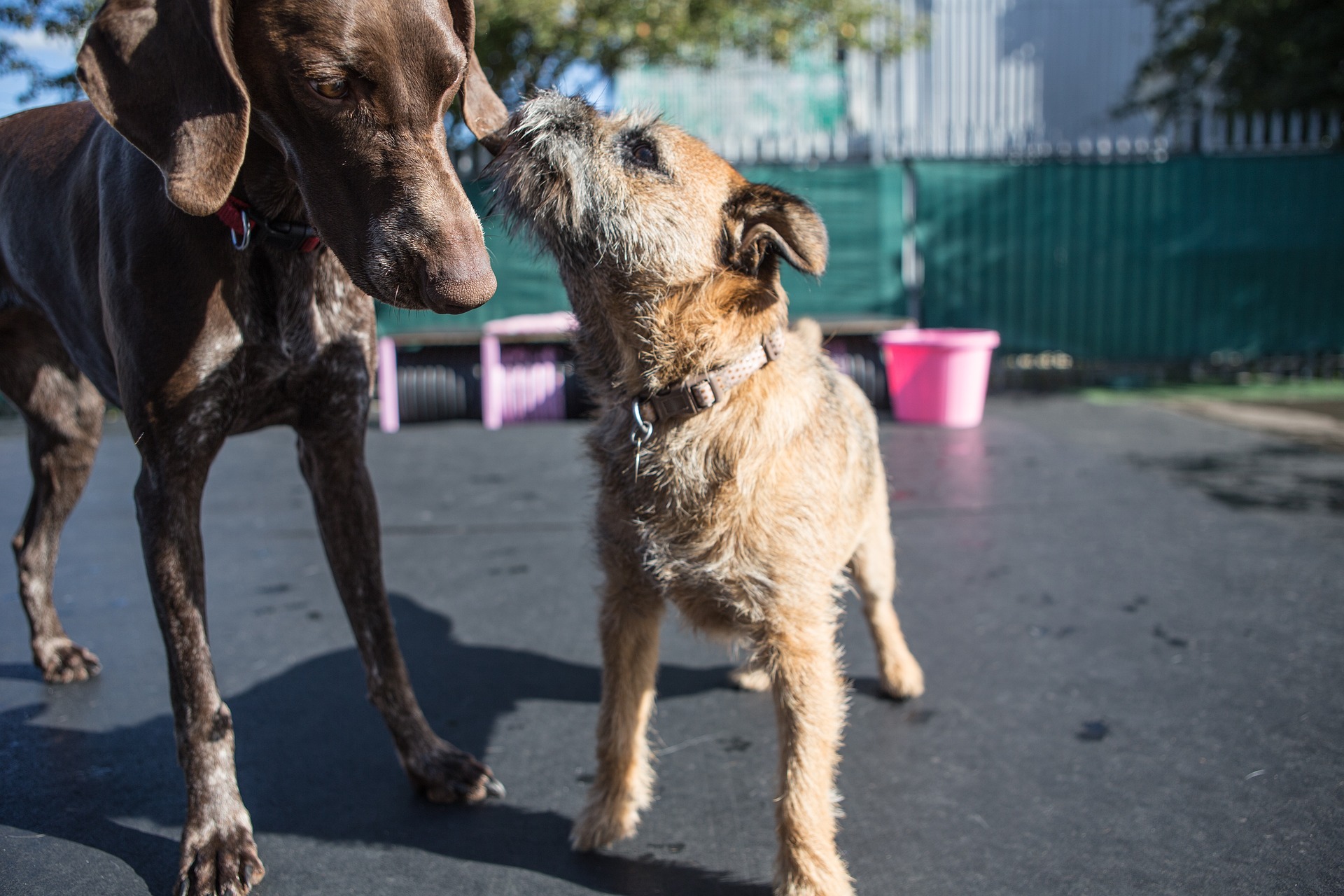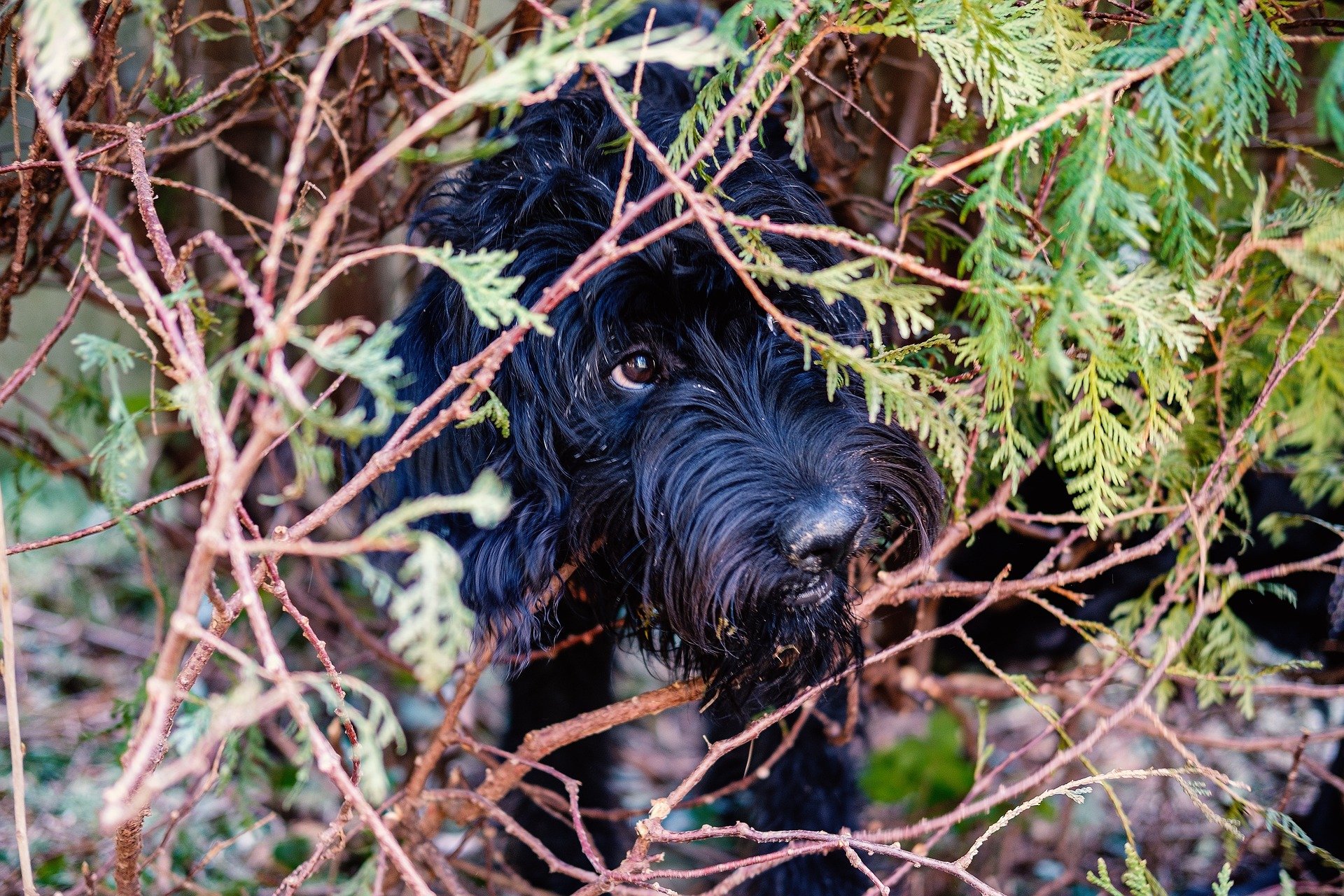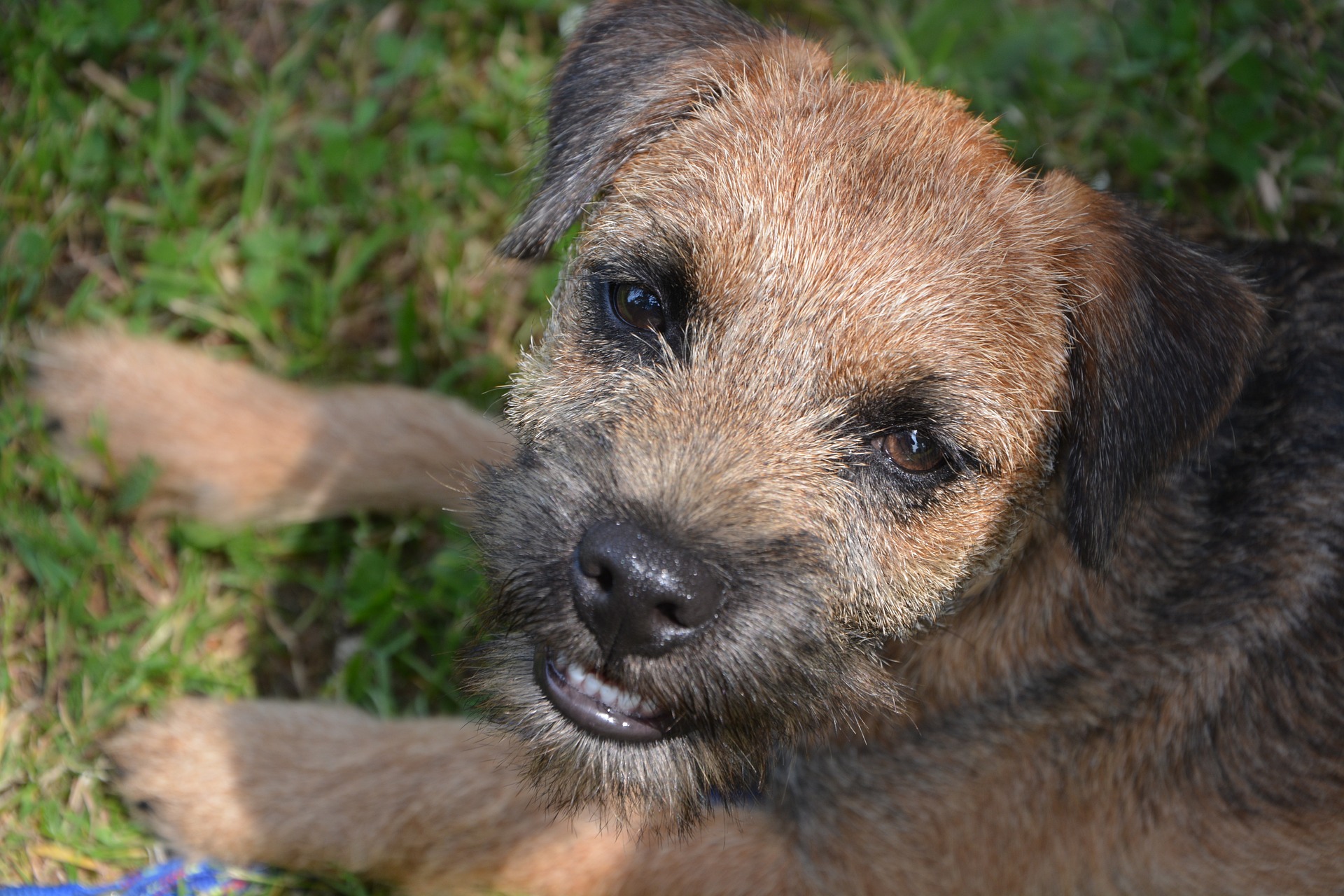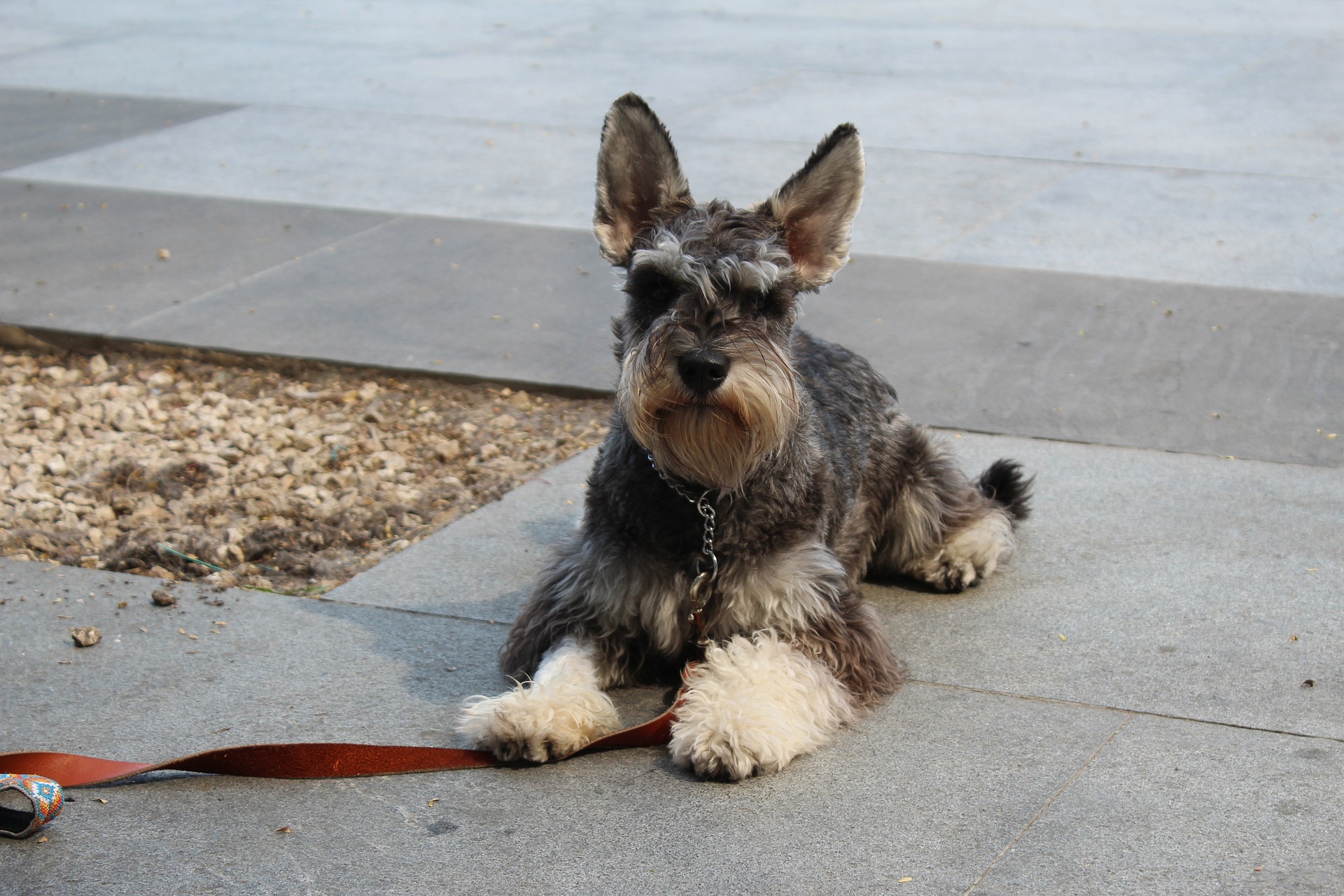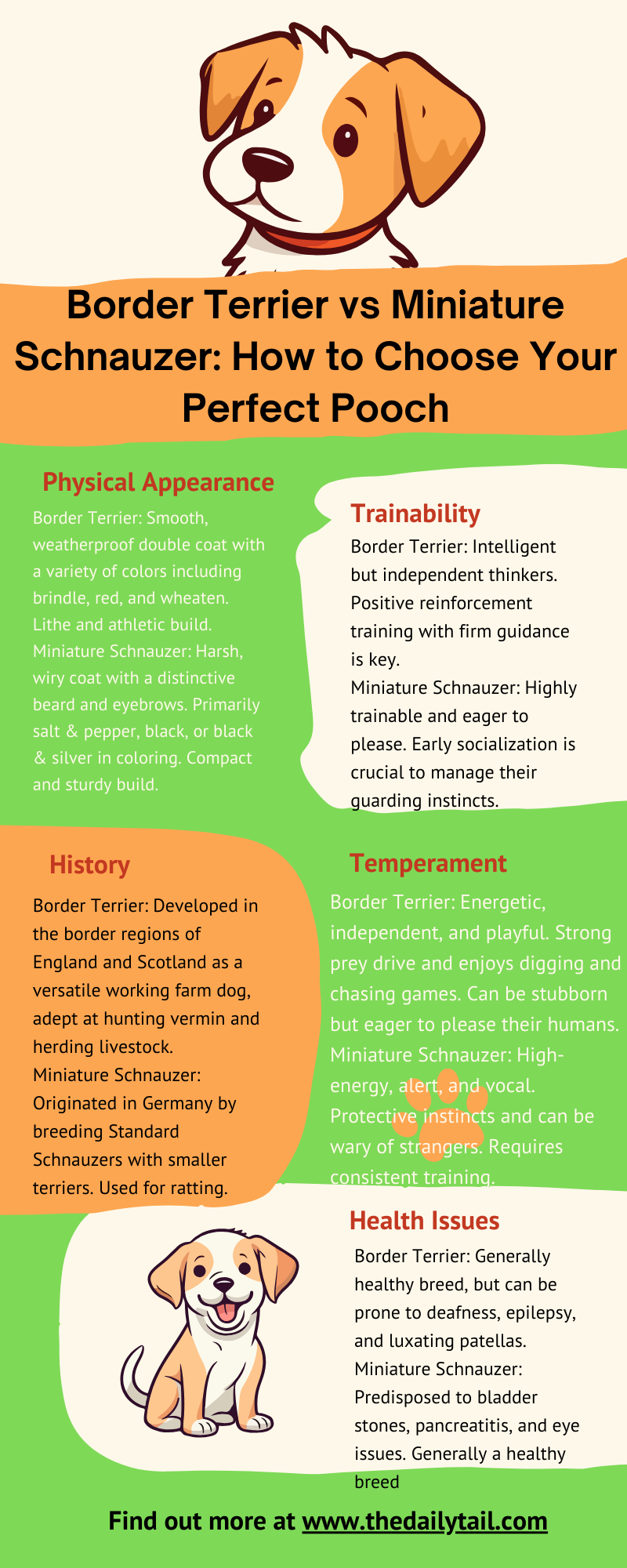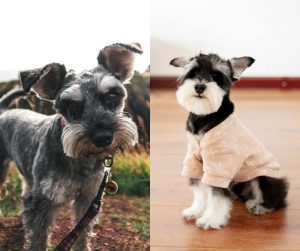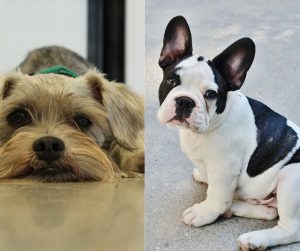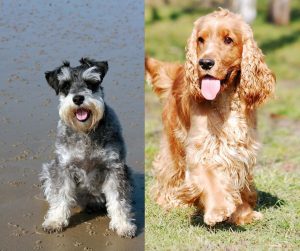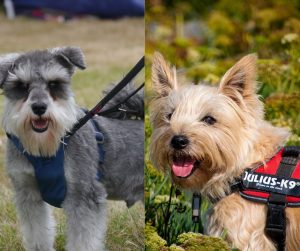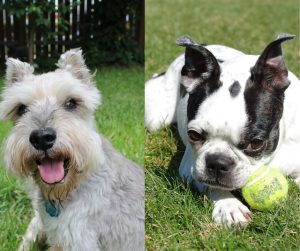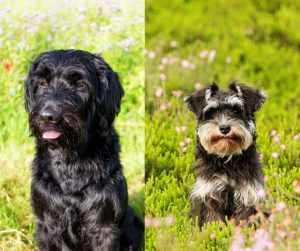From tenacious terriers to spirited Schnauzers, I’ve witnessed the boundless energy of both breeds. But Border Terriers and Miniature Schnauzers offer distinct companionship styles. Let’s explore what makes them unique.
Choosing the right dog can be a delightful yet daunting task, with so many breeds offering a variety of features and personalities. For those contemplating small to medium-sized dogs that blend well into family life and require moderately low maintenance, the Border Terrier and Miniature Schnauzer are two breeds worth considering.
Both breeds hail from distinguished backgrounds, with the Border Terrier bred for hunting foxes in the hilly border country between Scotland and England, while the Miniature Schnauzer dog breed, originating from Germany, was a farm dog bred to hunt rats and guard property.
Despite their shared suitability for novice owners and affectionate nature towards children, these two breeds have distinct traits. The Border Terrier is known for its even temperament and friendly demeanor, often excelling in agility and companionship. On the other hand, the Miniature Schnauzer is recognized for its spirited and alert character, being a vigilant watchdog and a family pet capable of adapting to various living conditions due to its flexible nature.
While both breeds share an impressive intelligence that makes training a rewarding experience, they also have their specific health considerations and grooming needs. Deciding between the wiry coat of a Border Terrier dog breed and the distinctive, hypoallergenic fur of a Miniature Schnauzer puppy leads prospective dog owners and pet parents to weigh the merits of each breed’s maintenance demands.
Key Takeaways
- Both Border Terriers and Miniature Schnauzers are suitable for new owners and family environments
- Each breed possesses unique personality traits; the Border Terrier is friendly and amiable, while the Miniature Schnauzer is lively and watchful
- Prospective owners should consider each breed’s health, grooming needs, and adaptability to living environments
Breed Origins and History
Exploring the rich tapestry of dog breed history, we find unique tales of two distinct breeds: the Border Terrier from the rolling hills between England and Scotland, and the Miniature Schnauzer originating from the bustling landscapes of Germany. Each has its own storied past that illuminates their character and appeal today.
Roots of the Border Terrier
The Border Terrier, with its wiry coat and keen eyes, has roots deeply entrenched in the rugged countryside of the Anglo-Scottish border. Historically, Border Terriers were bred for their gameness in hunting foxes and vermin, skills that were highly prized in the challenging terrains of Northern England and Scotland. These tough little dogs were valued by farmers and shepherds alike for their ability to keep pests at bay.
- Country: England/Scotland
- Purpose: Hunting foxes/vermin control
- Traits: Hardy, tenacious
Border Terriers were recognized as a breed by The Kennel Club in the UK towards the end of the 19th century, sealing their legacy as one of the oldest British terriers known for their pluck and hardiness.
Ancestry of the Miniature Schnauzer
On the other hand, the Miniature Schnauzer hails from Germany, with its hallmark bushy beards and sharp, intelligent expression. Bred down from their larger cousins, the Standard Schnauzer, they share a heritage of being versatile farm dogs. They first drew breath in the late 19th century, with a history intertwined with both utilitarian work and companionship.
- Country: Germany
- Purpose: Farm work, ratting, companionship
- Traits: Intelligent, spirited
First officially recognized in 1899 and later by the American Kennel Club in 1926, Miniature Schnauzers quickly established themselves as a breed beloved for their lively temperament and distinct look. The breed’s introduction to the United States around 1925 marked the beginning of its worldwide popularity.
Both breeds, with their distinct histories and origins, bring a slice of the past into the homes and hearts of dog lovers around the world. So, whether it’s the Border Terrier’s heart and hunting prowess or the Miniature Schnauzer’s spirited intelligence, the history of these breeds enriches their charm and our understanding of their place in the canine family.
Physical Characteristics
When choosing between a Border Terrier and a Miniature Schnauzer, understanding their physical traits is essential as they have distinct appearances that cater to different preferences and lifestyles. Let’s take a closer look at their size, weight, and coat characteristics.
Comparing Size and Weight
The Border Terrier is a small, agile dog, standing about 10 to 11 inches tall at the shoulder. They typically weigh between 11.5 to 15.5 pounds, presenting a sturdy build for their size. In comparison, the Miniature Schnauzer is a bit stockier, with a height ranging from 12 to 14 inches. They tend to weigh a bit more as well, falling in the range of 11 to 20 pounds. Yet, we have to mention that there is also a Standard Schnauzer, who is a bit larger.
Size and Weight Table:
| Breed | Height (inches) | Weight (pounds) |
|---|---|---|
| Border Terrier | 10 – 11 | 11.5 – 15.5 |
| Miniature Schnauzer | 12 – 14 | 11 – 20 |
Coat and Colors
Border Terriers have a double coat with a dense undercoat and a wiry topcoat, which is quite distinctive. They come in several colors, including red, wheaten, blue and tan, or the unique grizzle. Their coat is manageable but requires regular stripping to maintain its characteristic texture.
Conversely, Miniature Schnauzers boast a wiry topcoat and a soft undercoat, which must be regularly groomed to preserve the breed’s traditional look. They commonly come in black, silver, and salt and pepper color schemes, and they’re often noted for their distinctive facial furnishings that give them a wise and spirited expression.
Coat and Color Features:
- Border Terrier puppy: Double coat; wiry; colors include red, wheaten, blue and tan, or grizzle. Regular stripping for maintenance
- Miniature Schnauzer puppy: Wiry over soft undercoat; common colors are black, silver, and salt and pepper. Regular grooming for breed’s distinctive look
Personality and Temperament
When choosing between a Border Terrier and a Miniature Schnauzer, it’s the subtle nuances in their personalities that might sway a potential pet owner. Both breeds are noted for their lively spirits and affectionate natures, yet they exhibit distinct traits that set them apart.
Behavioral Traits
Border Terriers are renowned for their independence and tenacity. They embody a spunky energy and show a level of affection that’s endearing to families. These dogs are friendly and typically well-disposed towards children, displaying a patient and resilient temperament that meshes well with the energy of younger family members.
In contrast, Miniature Schnauzers assert themselves with an air of confidence and alertness. Their intelligence shines through in their responsiveness to training, and they exhibit a natural inclination toward being affectionate and loving. While they’re energetic, their personality is balanced by a friendly demeanor that’s welcoming to family members and respectful of the household’s established routines.
- With Family and Children: Both breeds make loyal family members but Miniature Schnauzers may have an advantage in trainability
- Towards Other Dogs: Border Terriers can sometimes be more stubborn, requiring careful socialization, especially around other dogs
Pet Compatibility and Socialization
Socialization is key for both breeds to ensure they become well-rounded pets. Border Terriers are generally stranger friendly and can integrate well into a home with children and other dogs, given proper introductions and consistent interaction. Their spirited nature makes them fond playmates for kids, and when socialized, they can coexist harmoniously with other dogs.
Miniature Schnauzers, with their intelligent and alert characteristics, thrive on engagement and mental stimulation, making them adaptable to various social scenarios. It’s paramount for these Schnauzers to interact with a variety of people and pets early on to solidify their affectionate and friendly traits. When socialized, they’re amiable companions for both humans and other animals in the home.
- Meeting Strangers: With regular social experiences, both breeds can be stranger friendly, a quality that’s especially strong in Border Terriers
- Living with Other Pets: To foster positive relationships with other pets, early socialization for both breeds is important; however, Miniature Schnauzers may require more consistent training in this area due to their spirited personality
Health and Lifespan Comparisons
When comparing the Border Terrier and the Miniature Schnauzer, potential owners should consider not only their charming personalities but also their health and longevity. Both breeds tend to be robust and long-lived, but they do have some breed-specific health challenges.
Common Health Issues
Border Terriers are generally healthy dogs, but they can be prone to certain health problems:
- Hip Dysplasia: A condition where the hip joint doesn’t fit together perfectly, which can lead to arthritis
- Patellar Luxation: The kneecaps may slip out of place, and it’s a condition to watch for in these active dogs
- Cataracts: Can lead to impaired vision and might require surgery
Miniature Schnauzers also have a stout build and are usually healthy, yet they have their own set of common health issues:
- Hypothyroidism: An underactive thyroid gland which can lead to obesity, lethargy, or other health issues
- Pulmonic Stenosis: A heart condition which can lead to reduced blood flow and potential complications
- Cataracts: Like Border Terriers, they can develop cataracts that may affect their eyesight over time
Life Expectancy
Life expectancy for each breed reflects their overall health profiles:
- Border Terriers tend to have a hearty constitution, and they typically enjoy a lifespan of around 12-15 years
- Miniature Schnauzers are known for their spirited presence and similarly have a life expectancy ranging from 12-15 years
Both breeds benefit greatly from regular health check-ups, a proper diet, and plenty of exercises, which can help in mitigating some of the common health issues and contribute to a full and lively lifespan.
Maintenance and Living Requirements
When choosing between a Border Terrier and a Miniature Schnauzer, potential owners should consider their distinctive grooming needs, exercise demands, and how well they’ll fit into their living spaces.
Grooming Needs
Both Border Terriers and Miniature Schnauzers have double coats, but grooming them isn’t quite the same ball game. Border Terriers possess a wiry topcoat and soft undercoat, which ideally should be hand-stripped twice a year. Though some prefer clipping, it can soften the coat, altering the texture and color. For the Miniature Schnauzer, their dense, wiry coat requires more frequent attention to prevent mats and tangles, typically suggesting a professional grooming session every 5-8 weeks.
- Shedding: Border Terriers shed minimally. Miniature Schnauzers are also minimal shedders
- Hypoallergenic: Neither breed is truly hypoallergenic, but they are often well-tolerated by people with mild allergies due to their minimal shedding
Exercise and Activity Levels
These breeds may be small, but they’ve got a ton of energy. They need regular exercise to keep them happy. For the Border Terrier, they need a good hour of walking each day, and they love to play. This keeps their smart minds engaged and helps prevent behavior issues. The Miniature Schnauzer shares a similar energy level, thriving on daily walks and playtime. They’re known for their agility and can be quite the little athletes!
- Activity: Both breeds enjoy interactive play sessions with their owners, like fetch or tug-of-war
- Energy Level: High for both breeds; a daily exercise regime is essential
Adaptability to Living Spaces
Whether you’re in a sprawling farmhouse or a cozy apartment, both breeds can adapt if their exercise and mental stimulation needs are met. Border Terriers are famously flexible, adjusting to various living environments, but they do like to follow their noses, so secure fencing is pivotal. Miniature Schnauzers, on the other hand, are great indoor companions and can live happily in an apartment setting as long as they’re given enough exercise.
- Apartment: Suitable for both breeds with ample daily exercise
- Living Environment: Border Terriers need secure fencing due to their chase instincts; Schnauzers handle urban living well if mentally stimulated
Training and Intelligence
When considering a Border Terrier or a Miniature Schnauzer, understanding how they learn and respond during training sessions gives a clear insight into their intelligence and suitability as pets.
Trainability and Learning Curve
Border Terrier: They are known for their eagerness to please which makes them highly trainable. Initial obedience training goes smoothly as they tend to soak up new commands with enthusiasm. They do have a hunting background, so patience is key when redirecting their attention from their innate prey drive.
- Responsiveness: High
- Stubbornness: Low to moderate
- Best Approach: Positive reinforcement
Miniature Schnauzer: These little dogs pack a lot of brain power and are often quick to understand what’s expected of them. They thrive on mental stimulation and excel in obedience with consistent training. Miniature Schnauzers can be a bit strong-willed, so it’s important for training to be both firm and loving.
- Responsiveness: High
- Stubbornness: Can be moderate
- Best Approach: Consistency and variety in training
Instinctual Behaviors
Border Terrier: With a strong prey drive due to their hunting past, they may sometimes get distracted, but this same trait makes them natural watchdogs, alerting their owners of any unusual activities. They’re not typically guard dogs but will defend their home if necessary.
Miniature Schnauzer: Originally bred to catch vermin, their prey drive is still very present, which also keeps their watchdog instincts sharp. While they are not large enough to be a traditional guard dog, their alertness to intruders is undeniable.
Understanding these breeds’ backgrounds is crucial to appreciate their learning behavior. They both need a guiding hand to balance their natural instincts with desired pet behavior.
Breed Comparisons and Considerations
When weighing the options between the Border Terrier and Miniature Schnauzer, potential dog owners should consider characteristics like personality, size, and energy level. Each breed offers a unique blend of qualities that may be more suitable for different household environments, from families with children to households with other pets.
Distinctive Features and Differences
Border Terrier:
- Size: Small, with a wiry coat
- Personality: Known for being affectionate and child-friendly
- Energy Level: High; enjoys plenty of exercise
Miniature Schnauzer:
- Size: Small to medium, with distinctive facial hair
- Personality: Intelligent, alert, and friendly
- Energy Level: Energetic, requiring regular activity
| Feature | Border Terrier | Miniature Schnauzer |
|---|---|---|
| Kid Friendly | High | High |
| Pet Friendly | Good with socialization | Good with socialization |
| Size | Smaller | Slightly larger |
| Coat | Wiry, sheds less | Dense, hypoallergenic |
| Trainability | High | High |
Choosing the Right Breed for You
Selecting between the Border Terrier and Miniature Schnauzer should be based on lifestyle fit. They prefer active families who can keep up with their energy. They’re both highly trainable, which can resonate with first-time dog owners. Consider the size of your home, your ability to provide daily exercise, and whether you have kids or other pets. While both breeds are kid-friendly, the Border Terrier has a slight edge in the friendliness factor, but both can integrate well into a family environment with proper socialization.


